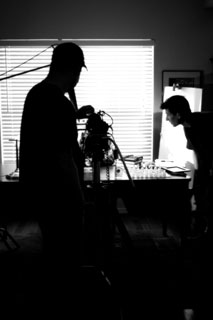| |
 Post-Production Tools Post-Production Tools
Just how seriously is the consideration being made to get the look of film? Software solutions such as Redgiant’s Magic Bullet, which address the 24p, Cinema Gamma and 16:9 letterbox concerns, run into several hundreds of dollars for the most basic of configurations. Panasonic’s “low-cost” DVX cameras are considered by and large the de facto favorite among indie filmmakers because of their unique 24p and Gamma features that set them apart. More importantly, PC Nonlinear editing solutions have become much more capable than ever before: feature-rich with such new enhancements as built-in vectorscopes and professional-grade color-correction tools, among others. For the first time, the most sophisticated of editing and compositing techniques are within very easy reach to the casual user, available now at only a fraction of the cost of a few short years ago. As an example, hi-definition image sequences can be cropped and rotated in real-time on even the most modest of PC editing systems.
|
|
|
Film-Style Cinematography and the Redrock M2 Cinema Lens Adapter
And yet, there’s still something not quite right.
There remains one last key characteristic of Mini-DV and HD that spells “video” from a mile away. And that is the lack of cinema-style depth of field. Because Mini-DV camcorders acquire their images through small CCD sensors that are limited by the way light travels to them from the lens, there is very little that can be done at the camera level to address this issue – larger CCDs would solve the problem, but the modified camera would become prohibitively expensive as a result, thereby defeating the purpose. Unlike 24p and Gamma and 16:9 resolution - aspects which can be easily manipulated in post-production where the camera is not able to accommodate - any attempt to digitally alter footage via rotoscoping and using masks to blur in post to simulate depth of field quickly becomes tedious and futile as a result. If you were trying to emulate Citizen Kane, so be it. Otherwise, you would be stuck – your otherwise “filmic” production would be instantly labeled as “video” because each shot would have EVERYTHING in focus. No rack-focus shots. No pull-focus. This spells “video.” And there would be absolutely nothing you could do about it… Until now…. Until the Redrock M2. A new revolution is upon us.
About the Author
 |
Mark Hlousek is an independent filmmaker currently based in Toronto , Canada . He has had a number of films screened at various international film festivals, as well as broadcast on television. Mark is excited about the new directions that digital filmmaking is taking and the opportunities that New Media offer the creative artist. Mark is also a teacher, teaching film at the College level in Toronto . |
|
| He is currently in production on a television series about guerilla-style indie filmmaking. In addition, Mark works full-time as a producer in-house at Canada 's Moveiola Network (www.movieola.ca), one of the world's two channels dedicated exclusively to the broadcast of short films. |
|
|